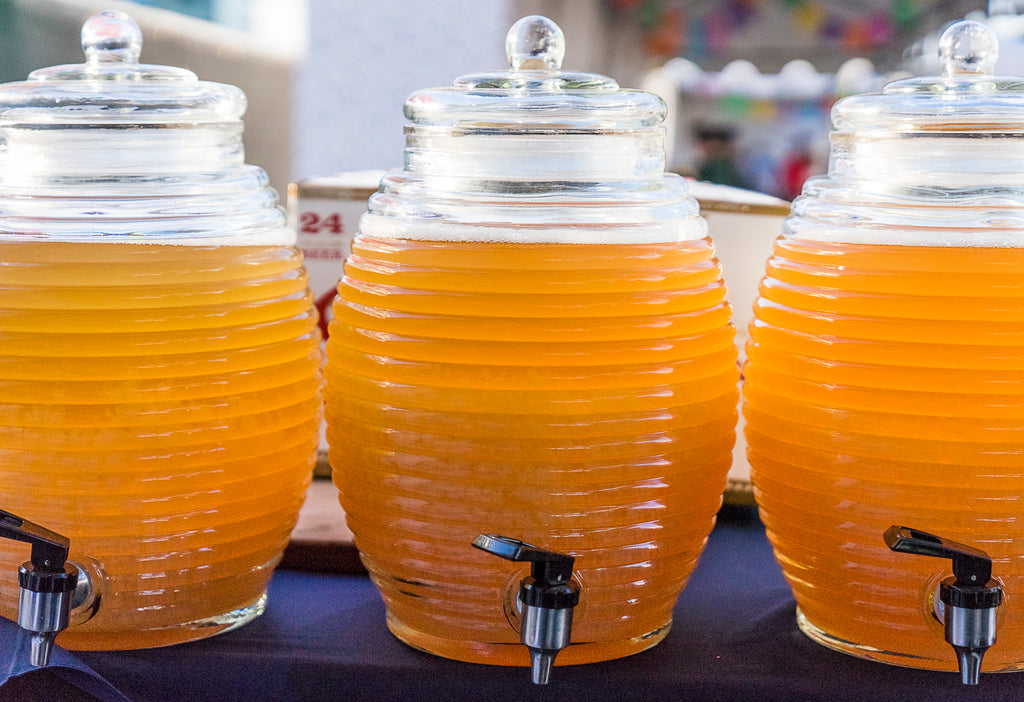WHAT IS COLONY COLLAPSE DISORDER?

The Beginning
In approximately 2006, American commercial beekeepers began to experience high rates of colony loss. Hives that were previously active the day before were suddenly empty. On inspection the beekeeper would find capped brood but no workers or drones. Dead bees were to be found inside the hives. Beekeepers had never seen anything like it. This problem was eventually dubbed Colony Collapse Disorder (CCD).
Colony mortality rates were reported from 30 - 90%. This was a drastic increase from the typical 10 - 15% in previous years. The sudden decline raised alarms in the commercial beekeeping realm as potential economic ramifications were dramatic. Commercial pollination is a 20 billion dollar industry in the United States. With the European Honeybee (Apis mellifera) responsible for pollinating over 90 different food crops our agricultural system was at risk. Scientists and researchers began scrambling for answers.
What is CCD?
Smash cut to 2015. Here's what we know about CCD thanks to the tireless work of credible researchers. Colony Collapse is a syndrome - a variety of environmental factors that conspire to destroy a colony. Six main factors have been identified to be responsible for CCD. These are; lack of genetic diversity, pesticides, malnutrition, parasites/disease, in-hive chemicals, and migratory beekeeping practices.
Note: CCD is not caused by cell phones, cell phone towers, the magnetic poles fluctuating, gluten or any of the junk science theories put forward by those who lack the understanding that correlation does not imply causation.
The Factors
In 1922 the United States passed the Honey Bee Restriction Act. The Act banned the importation of honeybees from foreign countries after they found honeybees imported from England carried tracheal mites (Acarapis woodi). Tracheal mites live in honeybee breathing tubes scarring them. This results in the suffocation of the honeybee. Not a pleasant death. Importation of honeybee stock was banned in an effort to halt the spread.
Restricting the importation meant that the genetic pool would remain shallow. Researcher Ramesh Sagili of the Oregon State University Honeybee Lab has stated that all of our honeybees in the US are descendants of only 472 mother queens. We know that with such a lack of genetics effective queen rearing becomes problematic. Stock becomes inbred, weakened, and less able to fend off disease.
The use of pesticides has been a rallying call as of late with Bayer and Monsanto receiving the brunt of the public's fury. Neonicotinoids are the most recognizable due to the media coverage they receive. They are a relatively new class of neuro-active insecticides related to nicotine that have been shown to interfere with honeybee's ability to navigate back to the hive. No real surprise here...it's a powerful insecticide designed to kill bugs.
In commercial beekeeping colonies are often placed into mono-crop environments (that have been sprayed with pesticides). These environments provide only one source of nectar and pollen for the honeybees. Honeybees are meant to have a wide variety of forage, just like humans. Protein and carbohydrate profiles must be varied for them to remain healthy. Like humans, honeybees must have a balanced diet.
Because the colonies have been weakened, their ability to fight of disease and parasites has been compromised. To combat this beekeepers will often use in-hive chemicals. Anti-biotics are used to stem nosema, foulbrood and a host of other maladies. Arachnicides are used to treat for varroa (a nasty little creature that feeds off the honeybee's hemocyte) and tracheal mites. Both are vectors for other diseases like Deformed Wing Virus and Acute Paralysis Virus.
While anti-biotics work, they also kill the beneficial gut bacteria in the honeybee stomach making nutritional uptake more difficult. Not to mention creating resistant strains of the diseases. Arachnicides help with mites however they too become resistant to treatments. These arachnicides also kill off a beneficial psuedo-scorpion that predates varroa mites. It's a vicious cycle.
Finally, migratory beekeeping practices, constantly moving hives long distances stresses the colony further weakening it. Being locked inside the hive, bumped, and bounced around then let out in a foreign location is not relaxing for the honeybees.
What Does It All Mean?
Taking into account all factors that cause of Colony Collapse Disorder the fog begins to lift. When we ask ourselves, "In what environment are the previously mentioned factors commonly found?". The answer is always - within commercial beekeeping and big agricultural practices. Colony Collapse is symptomatic of the unsustainable agricultural system we have come to rely on. When honeybees are kept outside of this particular environment they remain healthier.
It's time to examine the way we handle our honeybees and developing new, low impact methods is ultimately the only way to change the course of this current trend. Fortunately there are those that are on the vanguard of new beekeeping working diligently to create stronger colonies. Beekeepers such as Jana Kinsman in Chicago, Rob Keller in Napa Valley, Hilary Kearney in San Diego, Kate Franzman in Indianapolis, and Jacques Wilson in Brisbane are ushering a new era. We must look to their methods as they will ultimately be the ones who save our honeybees.
While there are significant challenges ahead, the future is bright.
~Damian Magista, Bee Local Founder




























































